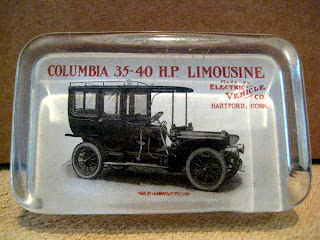Another, even older book, however, carries a different story. In the Old Testament of the Bible King Hezekiah, shown here, was very sick. Apparently stricken with boils, he seemed near unto death and prayed for deliverance. The answer came in the shape of the Prophet Isaiah who told Hezekiah to apply a bunch of fresh figs to his sores. He complied and was completely healed.
That was the fig story captured by the nostrum peddlers. Their sales pitch had nothing to do with boils, but largely with constipation and other ills. Figs are known to have a mild laxative effect and it was that quality that spawned the widespread sale of fig remedies. Among the most notable was
 the “Syrup of Figs” produced by the California Fig Syrup Co. of San Francisco. It came in labeled, embossed bottles that sold in drug stories across America at the not inconsiderable cost of a half dollar.
the “Syrup of Figs” produced by the California Fig Syrup Co. of San Francisco. It came in labeled, embossed bottles that sold in drug stories across America at the not inconsiderable cost of a half dollar.As shown here, this company advertised widely in national magazines, frequently featuring comely women to illustrate its product. It claimed offices in Louisville, Kentucky; New York City, and London, England. Another advertising method was offering colorful lithographed tin signs to pharmacies stocking the syrup, again featuring a young lovely. The California Fig Syrup Co. was not without its imitators. Although figs are not native to Wisconsin, the Andrews Drug and Chemical Co. of Drillion had its own “Syrup of Figs.” Its product claimed to cure “many ills arising from an weak or inactive condition of the stomach, bowels, kidneys and liver.”
In the wake of the Food and Drugs Act of 1906, health authorities targeted the fig remedies. The American Medical Association (AMA) Journal wrote: “Syrup of Figs is a laxative whose chief advertising asset
 is its name.” It continued that any purging action was due to the presence in the mix of 25% senna, a tropical herb with well-recognized laxative effects. The AMA also noted that the syrup was 6% alcohol, about the potency of beer. Eventually Federal officials forced the fig syrup floggers to list senna and alcohol on the label. In England, however, the product continued to be sold the old way. California Fig Syrup Co. simply prepared two different boxes and labels.
is its name.” It continued that any purging action was due to the presence in the mix of 25% senna, a tropical herb with well-recognized laxative effects. The AMA also noted that the syrup was 6% alcohol, about the potency of beer. Eventually Federal officials forced the fig syrup floggers to list senna and alcohol on the label. In England, however, the product continued to be sold the old way. California Fig Syrup Co. simply prepared two different boxes and labels.None of this meant much to Fridolin Madlener. He was a Chicago liquor blender and
 wholesaler. Seizing on the popularity of fig remedies, he melded fig syrup with the rye whiskey he was mixing up in the back room and, eureka, Fig Rye was born.
wholesaler. Seizing on the popularity of fig remedies, he melded fig syrup with the rye whiskey he was mixing up in the back room and, eureka, Fig Rye was born. Madlener was not content with merchandising Fig Rye as a laxative. His advertising touted it as “an ideal health whiskey.” Ordinary whiskey, he claimed, was distilled totally from grains and “destroys the lining of the stomach, makes the liver hard as a rock, and causes disease of the kidneys.” By contrast, Fig Rye neutralized all
 those bad effects and was recommended for “the dyspeptic, the consumptive, the debilitated, the weak....” According to one Madlener ad, Fig Rye was used in 1,500 hospitals across America and prescribed daily by thousands of doctors.
those bad effects and was recommended for “the dyspeptic, the consumptive, the debilitated, the weak....” According to one Madlener ad, Fig Rye was used in 1,500 hospitals across America and prescribed daily by thousands of doctors.After Fridolin’s death in 1897, his son Albert continued to promote Fig Rye vigorously. The firm advertised in national magazines and sold it by mail all across America. One Madlener ad claimed that 100,000 bottles were sold annually. On the strength of its profits Albert commissioned the construction of a grand new house in Chicago’s Gold Coast. Currently on the National Register of Historic Homes, the mansion can be characterized as “the house Fig Rye built.”
Because whiskey was not subject to the labeling
 requirements of the Food and Drug Act, The AMA and the Federal food police could not lay a hand on the Chicago-based company. The coming of Prohibition, however, did spell a finish to Fig Rye. Fridolin Madlener, the man who gave the world Fig Rye, is buried in Chicago’s Graceland Cemetery. His grave lays beneath a huge monument bearing the family name and ornamentation that looks, at least to me, like hanging bunches of figs.
requirements of the Food and Drug Act, The AMA and the Federal food police could not lay a hand on the Chicago-based company. The coming of Prohibition, however, did spell a finish to Fig Rye. Fridolin Madlener, the man who gave the world Fig Rye, is buried in Chicago’s Graceland Cemetery. His grave lays beneath a huge monument bearing the family name and ornamentation that looks, at least to me, like hanging bunches of figs. 












